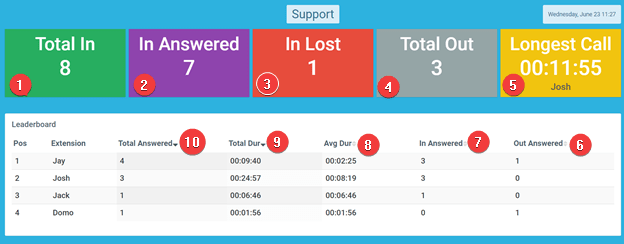How often should you blog?
- 26 June 2017
- on News
In my previous post, I wrote about the importance of having a company blog. A good post can certainly pique your readers’ interest. But the next question is how often should you blog about your business? How frequently should you post to generate a positive return on investment in your content? Is a daily blog post better than publishing content on a weekly basis?
To begin, there is no universal law that states the more you blog, the higher chances of increasing your ROI. In fact, I’ve scoured the internet for statistical findings on the best frequency for blog posting to find the magic formula. And I’ve found a lot of answers. For instance, Hubspot conducted a survey in 2015 on their subscribers’ frequency of blog posting and its correlation to website traffic. When comparing companies that published more blog posts per month to those that only posted four posts per month, the result is pretty obvious. Those that published at least 16 posts a month received more traffic. If you do the math, that would be four posts a week – quite a stressful task if you’re running your business and then writing quality posts at the same time.
On the other hand, there are reports that marketers expect almost 50% of web traffic surge if you post between 21 and 50 articles on your blog. Now that’s a lot tougher to maintain!
Neil Patel, the viral blogger, also studied blogging frequency and its effect on readership growth. His recommendations? Do a once-a-week post if it’s quite long with comprehensive coverage. On the other hand, post from seven to 10 write-ups if you’re doing short posts. The best strategy, according to Patel however, is two to four posts weekly. You’d be less stressed, and be able to focus on the content that matters most to your readers. This echoes Entrepreneur.com’s recommendation: do not stress yourself on blogging to the point that you’ve spent less time running your business. Sounds more sensible, right?
With all these recommendations, it is important to go back to your goals why you’re writing a blog in the first place. Isn’t it because you need to attract a wider audience in the hopes of converting them into leads and eventually as customers? In my opinion, it is necessary that blog post quality should precede quantity. So strike a perfect balance between the two.
Here’s my ten-point checklist to gauge the right number of blog posts for your business website:
- Ask your audience using a simple survey on how many times they would like to read new blog posts on your website. This would give you an indication of how fast you should keep up with your blog writing.
- Analyse your web analytics consistently. Which blog post outperforms others? Which topics do your readers find more interesting? What type of posts receives poor views? In short, let your numbers do the talking.
- Publish evergreen topics. An evergreen topic is something that remains relevant for a longer period compared to topics that trend only because of fads. It has to be useful to your readers in general. You can also write for a select group of readers as long as it’s easier to understand. So instead of writing about “Facebook Marketing Trends in 2017,” you should write about “Copywriting Tips for your Facebook Advertising.”
- Keep topics fresh and relevant to your audience. Nobody wants to read about a topic that has been rehashed over and over. You’ll build an audience by writing about new things that matter to your readers.
- Update your old content. While it is important that business bloggers search for new topics every now and then, it is necessary that old content is updated as well. A site visitor may stumble on your two-year-old blog post, but if you have not updated its content (i.e., data, charts, etc.), chances are that it will be dismissed easily.
Quick tip: Update top-performing posts and make sure to keep the keywords. - Maintain content quality. Nothing is as important as making your content highly relevant to your readers.
- Do not compromise quantity over quality. No amount of poorly written blog post can match the lead-generating potential of a single article that appeals to a large number of audience.
- Be consistent with your schedule. With the help of analytics, you can determine what is the best time and day to post on your blog. Your loyal followers will keep tuned to your blog for new posts, but if you fall short of their expectations then don’t expect them to check out your content anytime soon.
- Engage consistently with your audience. Publishing a blog post doesn’t end by clicking the “Publish” button. Your readers will appreciate that aside from providing useful content, you acknowledge their comments too. It will also help you find out if the blog is good enough to generate a lively discussion among your readers.
- Promote your blog post on your social media platforms. You will greatly benefit from your followers who will share your blog post with their friends. In addition, it will help you measure if the blog post is shareable or not.

Jez
- Posted on: 26 June 2017




